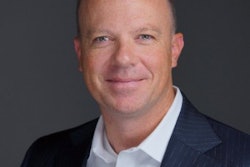
SAN FRANCISCO - The question every practice asks is "How do we increase our revenue?" The question Olya Zahrebelny, DDS, wants practices to ask is "How can we help patients pay for necessary and complex dental treatment that they often decline because of the out-of-pocket expense?"
 Olya Zahrebelny, DDS.
Olya Zahrebelny, DDS."Offices spend a lot of wasted time chasing dental insurers for negligible sums (under $1,000) when, for the same amount of time, they can be pursuing much larger payments for comprehensive treatment from medical benefit plans," she said.
Dr. Zahrebelny spoke with DrBicuspid.com in advance of her September 7 presentation at the California Dental Association's CDA Presents 2018 meeting. Her presentation was titled "Medical billing: There's nothing illegal about it." Dr. Zahrebelny is a principal in The Z Group, a practice management company focused mainly on training dental offices in the area of medical billing.
Covered procedures
Many offices aren't aware that so many of the procedures performed in the oral cavity are covered by medical benefit plans, according to Dr. Zahrebelny. She listed examinations, consultations, x-rays, and appliances for sleep apnea and temporomandibular joint disorders as among those covered.
“Offices spend a lot of wasted time chasing dental insurers for negligible sums.”
She also cited appliances for habit breaking, orthodontic appliances such as palatal expansion appliances; surgical procedures, including periodontal surgery, bone grafts, and tissue grafts; implant reconstruction procedures; treatment for traumatic injuries; biopsies; and incisions as being billable as well.
"Many practices don't know that interim prosthetics are covered routinely with surgical procedures," Dr. Zahrebelny said. "In the case of a traumatic injury, for instance, the definitive prosthetic is also covered."
In addition, prosthetic devices are covered if a patient has had major medical issues, such as treatment after cancer or radiation therapy, she noted. This includes crowns, bridges, and other removable and fixed prosthetics.
Getting started
For practices who want to begin billing medical insurers, it is important to start slowly, Dr. Zahrebelny advised.
"During my presentation, I'll show the audience checks that are for $60,000 or $80,000, for instance," she said. "Everyone wants to start billing for those 'megacases,' but I tell them that they need to build up to billing for the bigger surgical cases."
She tells her clients to begin with billing examinations, radiographs, and appliances.
"Those are slam dunks if you know what you are doing," Dr. Zahrebelny said. "Then work up to the bigger surgical cases."
Practices have to learn the process and become comfortable with it to have the best chance of ongoing success, she noted. She recommends that practices allot four to six months to become accustomed to the process, which differs greatly from billing dental insurers.
Dr. Zahrebelny also described the credentialing process and the areas where dental offices often have their claims rejected. The first is that a practice is not willing to take it one step at a time.
"A practice has to learn it correctly to begin with," she said. "I've seen many practices that seem to think that they can google the information. I recommend that practices take the time to attend a course that takes them from A to Z through the process."
The second is when the dentist is not properly credentialed.
"If a doctor is not properly credentialed, then every single claim that the office submits is going to be denied," she said.
Becoming credentialed is different from being a participating provider in a medical insurance company's network, she added. Rather it means being credentialed with an organization called the Council for Affordable Quality Healthcare (CAQH).
"If you aren't properly credentialed and the information that CAQH has does not match the information about you on the claim form that is submitted, it will lead to rejection every single time," she said.
Unlike some dental insurance billing, the vast majority of medical insurers require electronic claim filing, and all will require practices to do so by the end of 2018.
Dr. Zahrebelny said many dental practices tell her that medical billing does not work. She sometimes finds that this is because the practice's biller is filing claims via paper instead of electronically.
"Ninety-nine percent of the time they are rejected for that reason alone," she said.
Many practices also complain about the need to obtain precertification for each procedure.
"I tell them that this usually takes no more than 72 hours when done online through their clearinghouse portal," Dr. Zahrebelny said. "Look at it from the insurers' point of view -- if you are submitting a paper claim and you can wait six to eight weeks for a mailed response, how medically necessary is that procedure?"
For the process to work, it is extremely important to have the doctors on board with the whole program and understanding what their role is in the process, she noted. The office will not be successful if the biller is tasked with going about this process alone.
"The dentist has to provide the information in the right format," she added. "It's not like you have to do your exam or procedures differently, but how you report the information in the patient's electronic health records and clinical notes is different."
Dr. Zahrebelny said that she reassures her clients that the way they write their notes for medical insurers is more than acceptable for dental insurers, but the notes must come from the doctor.
"I remind my clients that the notes have to come from the doctor, not the biller," she said. "These are legal documents detailing the patients' history, clinical and radiographic findings, presenting conditions, previous therapies, surgical procedures, and clinical progress throughout their ongoing and current treatment. They must come from the doctor or clinical personnel and not the biller."


















